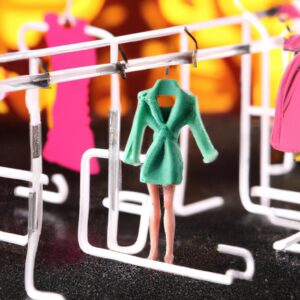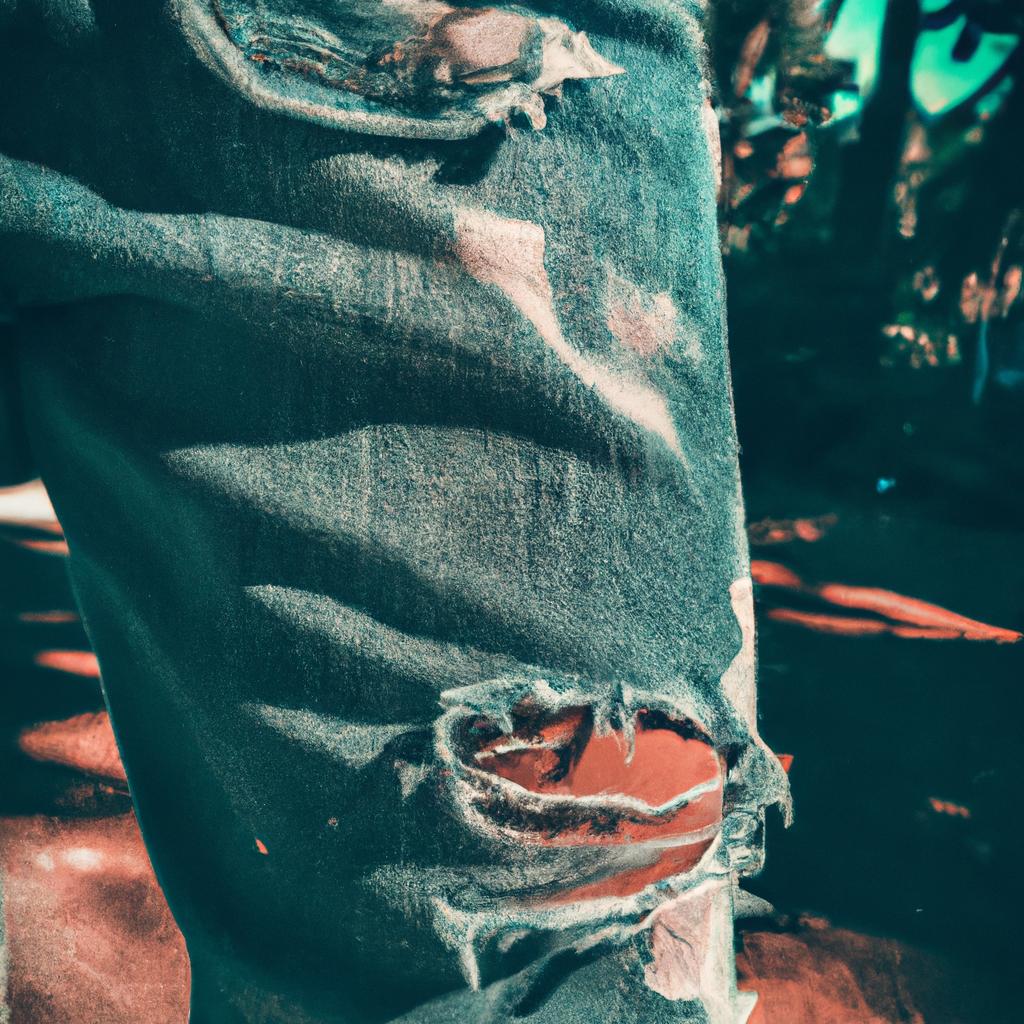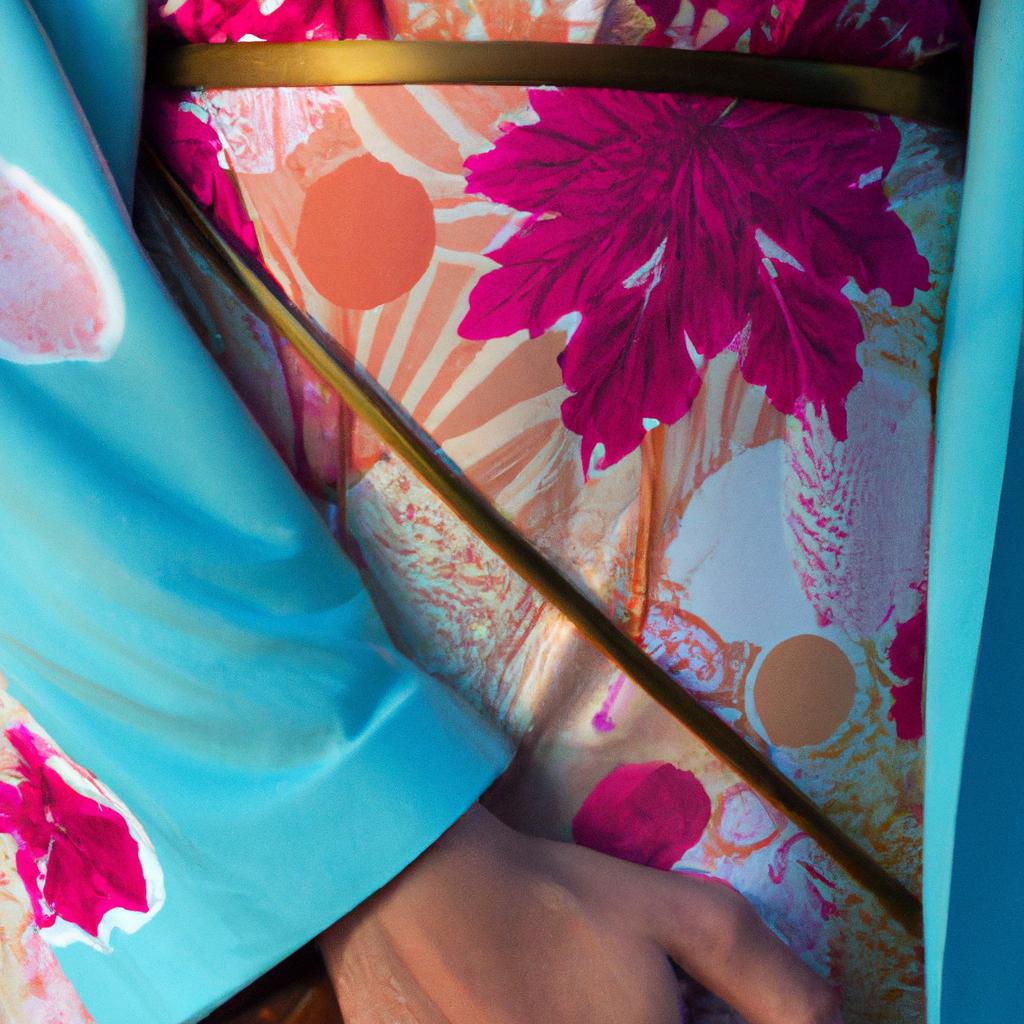From Catwalk to Closet – How Runway Trends Make Their Way to Mass Production
Fashion trends have always been a reflection of the times. From the bright and bold colours of the 60s and 70s to the minimalistic trends of today, the catwalk has long been the stage for fashion designers to showcase their latest creations. But how do these trends make their way from the runway to our closets? In this guide, we explore the cycle of fashion, how designer labels shape consumer preferences, trends in fast fashion and advances in apparel manufacturing.
The fashion cycle begins with the introduction of new trends on the catwalk. As these designs are shared in magazines and on social media, they slowly make their way into consumers’ wardrobes. As more people purchase them, the trend gains momentum and enters a growth period. Eventually, the trend matures, resulting in a decline in sales until it is replaced by a new look. This cycle is repeated throughout the year, with new collections being revealed every season.
Designer brands have a significant influence on how trends make their way to mass production. The designs that originate on the runways often become the inspiration for high street stores. Large fashion houses partner with big retailers to create low-cost imitations of their designs. This ‘trickle-down’ effect helps to bring the latest trends to a wider audience.
Fashion Cycle
The fashion cycle follows a certain pattern as trends move from the catwalk to the closet. This process includes four distinct stages – introduction, growth, maturity and decline. To better understand how trends make their way from the runway to regular consumption, it is important to understand these stages.
Introduction:
At the introduction stage, designers are launching new styles of clothing in their runway shows. In order to succeed, they must have come up with something new and exciting to attract attention and encourage consumers to invest in the trend. Once the trend has been established, it moves onto the next stage.
Growth:
During the growth stage, the trend starts to become more popular. It is picked up by high street stores, fast fashion brands, and celebrity culture alike. There may also be a few changes to the look and design to appeal to a wider range of consumers. This stage is the peak of the trend’s popularity.
Maturity:
At the maturity stage, the trend is still popular but it has peaked and is now on the decline. It is still present in the market, but it has lost some of its luster and is no longer the “it” thing. The trend may be tweaked or altered slightly to give it a bit of a boost.
Decline:
Finally, at the decline stage, the trend has run its course and is no longer in demand. It will eventually fade away as newer and more exciting trends take its place. However, some trends may stick around for months or even years before completely disappearing.
Designer Brands
Designer brands are known for creating unique and sought after collections that often become inspiration for styles that eventually make their way to mass production. Designers present their ideas on the runway, where their looks are analyzed and trends are set in terms of colors, fabrics, and silhouettes. From there, the looks that were seen on the runway can be recreated by large fashion stores or fast-fashion retailers in a less expensive form.
The influence of designer fashion can be observed in many aspects of the fashion world, from what people wear on the streets to what appears in store windows. Designer brands such as Gucci, Louis Vuitton, Marc Jacobs, and Balmain have grown in popularity in recent years, becoming trendsetters and influencing consumer choices. Trends seen on the runway show up in smaller forms min stores, allowing people to incorporate designer looks into their wardrobes at a fraction of the cost.
Designer labels also work with large fashion stores to create lines that are inspired by their designs. This allows people to access designer trends without having to purchase them at full price. By partnering with large fashion stores, designer labels are able to reach a wider audience and have greater control over how their designs are presented and sold.
The Designer-High Street Connection
Designer labels have been partnering up with large fashion stores to create collections that imitate their signature styles but available at more affordable prices. This connection is called the ‘Designer-High Street Connection’ and it has been gaining traction in the fashion industry over the past few decades.
In this connection, designers create exclusive collections for high street brands which are then put into production for mass consumption. This allows fashion retailers to offer customers styles and trends that reflect the designer’s signature style while also providing pieces at a more economical price. Not only does this help the designer market their style to new audiences, but it also allows customers to enjoy the designer’s style without having to pay the hefty designer price tag.
For example, Louis Vuitton collaborated with Target to create a limited edition collection featuring classic Pop Art prints and items like luggage, backpacks, and pet accessories. In comparison, the prices of the Louis Vuitton items ranged from $10-$160, whereas the regular prices for similar products can cost upwards of $1000.
The Designer-High Street Connection opens up a world of possibilities for customers to access quality products at more affordable prices. It also helps high street brands stay on trend and allows designer labels to reach a broader market. This connection has become an essential part of the fashion industry, connecting runway trends and mass production to allow consumers access to the latest styles in fashion.
Fast fashion has burst onto the scene in recent years, with a range of businesses looking to shortcut the slow journey from catwalk to closet. These brands produce trendy clothing and accessories quickly and cheaply, with their merchandise being made available to the public as soon as possible. This allows them to take advantage of changing consumer tastes and preferences before they become outdated or passé.
The concept of fast fashion is driven by the constant need for “newness” that is created by changing trends and styles. Fast fashion companies can give customers the chance to access new trends in a timely and affordable fashion. They don’t have to wait for months for the latest collections to launch, but can instead buy up-to-date items right away.
These quickly-produced garments are often made from lower-quality materials than those used by traditional luxury brands, and their designs tend to be simpler and more streamlined. This makes them much easier and faster to manufacture, allowing fast fashion companies to produce larger quantities of clothing at much lower costs.
In response to the prevalence of fast fashion, many traditional designer labels have begun partnering with high street stores to create low cost imitations of their own products. This further adds to the speed at which trends are picked up and produced by the mainstream fashion industry, giving customers quick and easy access to designer looks at affordable prices.
Structure of the Apparel Industry
Understanding the structure of the apparel industry is important for understanding how trends make their way from the catwalk to our closets. There are two main approaches to apparel production; mass production lines and fashion houses.
Mass Production Lines
Mass production lines involve large factories that produce garments in bulk. This method of production is efficient and cost effective, allowing companies to produce large amounts of garments quickly and cheaply. This is how most apparel items that we purchase in stores are made. These mass production factories create basic designs and colors. These clothing items tend to be timeless and not trend-based, since they’re produced in large quantities.
Fashion Houses
Fashion houses are responsible for designing and producing trend-focused items with unique styles and shapes. Designers often use unique fabrics and materials to ensure their products stand out. Fashion houses create limited runs of each item, meaning they won’t always be available or will be expensive. As such, fashion house items often set the tone for trends on the runway season after season.
The way designer labels partner with fashion stores, and the rise of fast fashion brands, ensures that these runway trends make their way to mass production and eventually into our closets.
The Influence of Celebrity Culture
It’s no secret that celebrities have had a major impact on the fashion industry. Whenever a bold new trend graces the red carpet, or an iconic style is seen being sported by a popular celebrity, it may not be long before the same look is seen on the high street. It is these moments that help to cement a style in popular culture, and from celebrities onto ordinary people.
Celebrities are often seen as trendsetters, and the clothes they wear can influence the choices ordinary consumers make. For example, when Kim Kardashian wore those famous Balenciaga shorts back in 2017, the brand saw a surge in searches across the internet. Similarly, when Hollywood icon Audrey Hepburn was seen wearing a little black dress, it soon became a staple wardrobe piece across the world.
Thanks to social media, fans can now keep up with celebrity style more than ever. Keeping fans informed about current trends, what celebrities like to wear and where to buy these items helps to promote the fashion industry further. Additionally, stars also engage in certain promotional activities for designers such as magazine shoots and runway shows.
At the end of the day, it’s clear that celebrity culture has had a strong influence on the fashion industry. by creating powerful trends that spread from the catwalk to the high street.
Innovations in Apparel Manufacturing
Advances in apparel manufacturing technology mean that production lines are now faster and more efficient than ever before. This is good news for both buyers and retailers, as it allows for trends to be produced quickly and cheaply, enabling them to keep up with the latest fashion demands. Clothing companies now have access to a variety of technologies that allow them to cut down on production time and cost. From automated cutting machines and 3D printing, to robotics and artificial intelligence, these advancements make it possible to create entire collections in an incredibly short amount of time.
Sweatshop labor is also being replaced by automation, which not only helps reduce costs but can also improve working conditions for those involved in the production process. For example, many automated systems such as computerized cutting tables are able to do repetitive tasks better and faster than manual ones, allowing workers to focus on more complex processes and quality control. Additionally, some apparel manufacturers are utilizing robots for sewing and other fabrication operations, which can reduce the need for long hours and strenuous labor.
The use of these technologies can lead to an increase in efficiency and cost savings, making it easier for buyers and retailers to obtain trendy clothes and accessories quickly and affordably. This makes it easier for fashion trends to make their way from the runway to regular consumption, allowing consumers to keep up with the hottest looks without breaking the bank.
Example Products
A great way to understand how trends make their way from the catwalk to the closet is to look at specific examples. One popular fashion item over recent years has been designer trainers. For instance, Adidas Originals x Pharrell Williams’s collaboration on the popular Hu NMD line of sneakers began with an appearance on the runway in 2019. Sought after by consumers, the sneaker debuted at high-end stores worldwide, but was soon made available for a lower cost through other outlets.
The same story can be seen with Off White’s ‘Fluid’ print design. After a feature during Paris Fashion Week 2017, the print quickly found its way onto mass market items such as t-shirts and hoodies. With celebrities donning the pieces, retailers were soon able to produce and market fashion items almost instantly.
By looking at such examples, it’s easy to see how trends start on the runway and make their way into the mainstream. With quick production capabilities, designers and retailers can keep up with changing styles and customer preferences on a regular basis.
Conclusion
In this guide, we have explored how runway trends make their way from catwalk to closet. We looked at the stages in the fashion cycle, the role of designer labels, the connection between designer labels and high street stores, fast fashion, the structure of the industry, celebrity culture’s influence, advances in apparel manufacturing technologies and an example product.
We have seen that runway trends are highly influential and can be found on clothing racks everywhere. They can be seen in fast fashion brands, but also in high end designer labels. Trends are a result of creative visions and industry forces, making their way from the runway to large consumer markets.
As technology advances, the speed with which trends reach the market continues to increase. This means there is an ever-changing landscape, filled with up-and-coming designers alongside trusted names. There will always be something new and exciting to explore!
Resources & Further Reading
In order to gain a deeper understanding of the runway-to-closet trend, have a look at some of the following resources.
- Fashion United: How Runway Trends Make Their Way to Mass Production
- Forbes: Understanding The Relationship Between Designer Brands And High Street Stores
- The Guardian: Fast Fashion: The World of Cheap Clothes Comes At Huge Cost
- Vogue: Inside The Effortless Chic World Of France Minister Of Style Emmanuel Macron
- The Business of Fashion: Fashion Technology Innovations That Are Reshaping Our Industry
In addition to the resources listed above, further information can be found in books such as “From Catwalk to Closet: Designers, Consumers and Mass Consumption” by M. Owens and S. Ings.
Keyword Optimization
When writing a guide such as this, it is important to optimize the text using keywords that are relevant to the topic. This ensures that when people search for particular topics online, the article will appear in their search results. In this guide, the keyword phrases provided are: “From Catwalk to Closet” and “How Runway Trends Make Their Way to Mass Production.”
These phrases should be woven into the body of the post wherever appropriate, but should not be forced or used in an unnatural way. For example, it could be mentioned within an introduction when discussing the subject matter, and again during the conclusion when summarising. Additionally, it can be used when discussing the various ways in which trends move from the runway to consumer markets, such as through designer collaborations or fast fashion purchases.
Using keywords effectively will help guide readers to your article, ensuring they find the information they are looking for. Therefore, checking the correct use of these phrases is essential when producing a guide of this kind.
comments: 0




